![]()
![]()
![]()
Use LEFT and RIGHT arrow keys to navigate between flashcards;
Use UP and DOWN arrow keys to flip the card;
H to show hint;
A reads text to speech;
13 Cards in this Set
- Front
- Back
|
Explain how air passes into our lungs. |
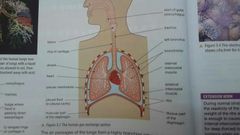
When we breathe in, air enters into our nose or mouth and passes down the windpipe or trachea. The trachea splits into two tubes called the bronchi, one leading to each lung. Each bronchus divides into smaller and smaller tubes called bronchioles, eventually ending at microscopic air sacs, called alveoli. It is here that gas exchange takes place. |
|
|
Explain how alveoli are adapted for gas exchange. |
1. The millions of alveoli mean that the lungs have a huge surface area. 2. The alveoli have very thin walls so the diffusion path is very short. 3. The alveoli have a very good blood supply. 4. Once the oxygen diffuses into the blood, it is rapidly removed. This ensures that the concentration gradient is as steep as possible. 5. By breathing (nose or mouth), we also increase the rate of diffusion. Breathing brings fresh oxygen into the alveoli and takes away the carbon dioxide. This makes the concentration gradients high for these gases. That increases the rate of diffusion. |
|
|
Explain the ventilation of lungs. |
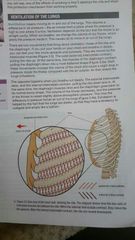
|
|
|
What are the four main chambers of the heart? |
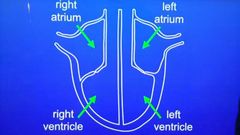
On the top portion, we have the right atrium and the left atrium. At the bottom is the right and left ventricle. |
|
|
What are the four main vessels of the heart? |
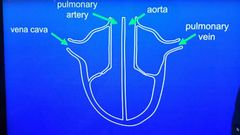
Vena Cava - It brings in deoxygenated blood from the body. Pulmonary Artery - The deoxygenated blood passes from the heart to the lungs. Pulmonary Vein - Oxygenated Blood passes from the lungs to the heart. Aorta - Oxygenated Blood is pumped from the heart to the body. |
|
|
What are the adaptations of arteries? |
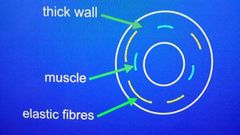
Arteries have very thick muscular walls, this allows them to withstand the very high pressure of the blood. Blood travels through the arteries in surges every time the heart beats. Elastic fibres stretch when the surge of blood passes through and then recoil in between surges, which keeps the blood moving. |
|
|
Discuss about capillaries |
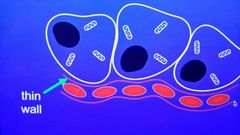
When the blood passes through capillaries, substances such as glucose and oxygen diffuse from the blood to the cells. Carbon Dioxide diffuses from the cells back to the blood. Capillaries have very thin walls, so the diffusion path is very short. This allows substances to diffuse rapidy between the blood and the body cells. |
|
|
Structure of Veins |
Veins have a thin wall. The blood pressure is low so the wall does not be need to be thick. Many veins contain semi-lunar valves. The job of valves is to stop blood flowing backwards. When the blood is flowing in the correct direction, then the valves open to allow the blood to flow through, however when the blood starts to flow backwards, the valves shut. |
|
|
Ecosystem Meaning |
All the organisms and the environment in which they live in form an ecosystem. The ecosystem is the community of organisms and the environment together. |
|
|
Population Definition |
Groups of the same species of animals form populations. |
|
|
Define Community |
All the populations of organisms that live in and interact in an ecosystem form a community. The community is all the living organisms. |
|
|
Meaning of Habitat |
The area or environment where an organism or ecological community normally lives or occurs. |
|
|
State the hierarchy of collective living things. |
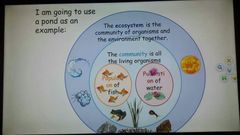
Habitat ---> Ecosystem ---> Community ---> Population |

